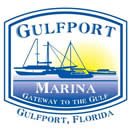from Norfolk to the Northern Gulf and Bahamas.
2025 KLSC Contest Winners Announced! – Key Lime Sailing Club
Key Lime Sailing Club, A CRUISERS NET SPONSOR, always has very special offers for their visitors! Key Lime Sailing Club is a unique slice of KEYS ENJOYMENT…give it a try and let us hear about your experience.


And the Winners Are… We are thrilled to announce the results of our 2025 Contests!
 2025 Photo Contest Winner: Mo Chandler (Entry #71) – Congratulations to Mo! Her stunning photo of a sunset by the Key Lime Sailing Club Tiki Hut brought back fond memories for so many of our guests. Mo has won a FREE 3-night stay at our cottages in the breathtaking Florida Keys!
2025 Photo Contest Winner: Mo Chandler (Entry #71) – Congratulations to Mo! Her stunning photo of a sunset by the Key Lime Sailing Club Tiki Hut brought back fond memories for so many of our guests. Mo has won a FREE 3-night stay at our cottages in the breathtaking Florida Keys! 2025 Video Contest Winner: Franklin Smith – A massive congratulations to Franklin! His video perfectly captured the fun of sailing and kayaking at KLSC, and even featured a catchy original song! Franklin has earned a FREE 5-night stay in paradise.
2025 Video Contest Winner: Franklin Smith – A massive congratulations to Franklin! His video perfectly captured the fun of sailing and kayaking at KLSC, and even featured a catchy original song! Franklin has earned a FREE 5-night stay in paradise.Thank You! We extend our heartfelt thanks to everyone who participated and voted. Your creativity and enthusiasm make this yearly tradition a success. We can’t wait to see what you create next year!

Win a FREE Vacation
January 1, 2026 to December 15, 2026: We are accepting all entries for this year’s Photo and Video contest. Please read the following information if you are interested in winning free stays at Key Lime Sailing Club and Cottages (KLSC).
Video Contest
This contest is open to all our guests. Submit a video of your KLSC vacation and get a chance to win a free 5-night stay! We are looking for the most creative and exciting video that tells people about your stay with us.
To our guests who didn’t enter the previous contests, this is your chance!
How to submit: Just upload your finished video to YouTube and email us the URL to your video. All links must be emailed to keylargocottages@
keylimesailingclub.com. Please include the dates you stayed, in which cottage, and under whose name it was reserved. If you send several emails, include this information in each one.
Evaluation Criteria
Videos will be judged by the following criteria:
- Overall Impact (fun and informative)
- Creativity
- Memorable Content and Delivery
- Clear Message about what vacationing at KLSC is all about
- Video quality
Terms:
- Winner must be 25 years of age or older.
- Winner can choose the dates from August 1st to December 15th for their stay (holidays not included).
- Main House is not eligible.
- Winner can add their free nights or extend their established booking nights if the booking is between August 1st to December 15th, and if the cottage is available on those extended dates.
- Chosen dates cannot be rescheduled to other dates. No exceptions. (Please finalize your dates before booking.)
- The reservation will be for two adults and the number of children allowed for the preferred cottage. However, if there are more than two adults, the winner is responsible for the extra adult fee of $35/per adult, per night plus tax. If bringing a dog to one of our dog-friendly cottages, the winner is responsible for the dog fee of $35/per night plus tax.
- KLSC reserves the right to use all submitted pictures and videos for its promotions and websites.
Contest is open starting January 1 to December 15. We will announce the winner on our Facebook page and newsletter within the first week of January. There is no limit to the number of videos submitted. So, create your videos now and share them with us!
Respect for Existing Copyright
Everything in your video must be your own work. If you include photos, clips, or music made by someone else, you must have their written permission to use it.
Using Music: Music rights can be tricky. Here are your safe options:
- Original is Best: We love original music, even if you are just humming! High-quality AI-generated music is also accepted.
- Royalty-Free: You can purchase a cheap track from a royalty-free stock music website.
- YouTube Library: Some popular songs are allowed because YouTube has an agreement with the publisher. Please verify this before using the song, or your video may be taken down.
Photo Contest
Pictures can include couples sailing, families sailing, Key Lime Sailing Club and Cottages (KLSC) activities (non-sailing), sailing lessons, etc. There will be a voting period on our Facebook page where the owner of the photo with the most “Likes” will get a free 3-night stay at KLSC. There is no limit to the number of photos entered. To our guests who didn’t join the previous contests, this is your chance!
Make sure to include captions with your submissions. Add the dates you stayed, in which cottage, and under whose name it was reserved. If you send several emails, include this information in each one.
Terms:
- Winner must be 25 years of age or older.
- Winner can choose the dates from August 1st to December 15th for their stay (holidays not included).
- Main House is not eligible.
- Winner can add their free nights or extend their established booking nights if the booking is between August 1st to December 15th, and if the cottage is available on those extended dates.
- Chosen dates cannot be rescheduled to other dates. No exceptions. (Please finalize your dates before booking.)
- The reservation will be for two adults and the number of children allowed for the chosen cottage. However, if there are more than two adults, the winner is responsible for the extra adult fee of $35/per adult, per night plus tax. If bringing a dog to one of our dog-friendly cottages, the winner is responsible for the dog fee of $35/per night plus tax.
- KLSC reserves the right to use all submitted pictures and videos for its promotions and websites.
Contest is open starting January 1 to December 15. We will announce the winner on our Facebook page and newsletter within the first week of January.
Thank you and see ya all in the Florida Keys!
Follow Key Lime Sailing Club and Cottages on Social Media: Facebook, Twitter, Inst
agram, Youtube, Learn ASA Certified Sailing at American Sailing Academy. Call us at 305-587-3205.
Enjoy a snorkel or sunset cruise on the bay side as well as several boats for rent from 22 foot to 37 foot through Morning Star Sailing Charters. Call us at 305-451-7057.
South Dade Marina, Wet and Dry Slips Available. Call 305-247-8730
Key Lime Sailing Club and Cottages | 305-451-3438 | 99306 Overseas Highway, Key Largo Florida | www.keylimesailingclub.com


Key Lime Sailing Club and Cottages | 99306 Overseas Highway | Key Largo, FL 33037 US Be the first to comment!
YEAR OVER YEAR – Janice Anne Wheeler, Sparring With Mother Nature
Forwarded this email? Subscribe here for more
SPARRING WITH MOTHER NATURE is sailing into 2026! Well, not literally…. Thanks for staying aboard while we save our piece of maritime history! ~J
If you’ve just joined our engaging little community, please read SPARS & SPARRING, my introductory piece.….and share it, if you are so inclined….that works wonders.
On the first day of 2026, I was just about to toss an empty bottle of cheap vodka through STEADFAST’s unzipped doorway when two yellow gloves appeared at the top of her ladder. Between the year’s end and Mother Nature’s Arctic blasts we’ve been the only folks in the boatyard for days, and I definitely did the whole “what are the chances?“ double take. Without a traditional greeting, the voice just behind the hands was an octave above its normal tone. “Holy f*#k you did a great job!” I laughed out loud in surprise and when Steve appeared from below, the visitor’s sentiment was repeated exactly (and then one more time at the end of the conversation; let me add that this man knows of what he speaks), heartfelt, and oh-so-very-appreciated. “You’re so much closer to be being done!” he told us.
I nodded with an unexpected wave of emotion, blown in through the doorway like the biting north wind. That evening, after an exquisite hot shower (our joys are simple), I sat down on this very Mac and delved into the thousands of photos I’ve taken with both Canon and phone over the last twelve months. It occurs to me, each time I do this, how complex, layered and impressive big wooden vessels can be; there is so much hidden beneath the planking. So many steps, so much time. Here’s the bow one year ago and yesterday. Nineteen months ago today, we investigated the tiny brown spot that led us here.

Port side, one year ago and yesterday.
 Slightly different view; for reference note the transducer bottom right, blue painter’s tape..
Slightly different view; for reference note the transducer bottom right, blue painter’s tape..Starboard side: new purpleheart stem (front of the vessel) was installed one year ago.

The views from the interior during the rebuild are even more striking to me.
 Purpleheart stem through the bulkhead crash hatch and port hullside under a bunk.
Purpleheart stem through the bulkhead crash hatch and port hullside under a bunk.Eyebrows did raise when our visitor took in the multiple 1.75liter bottles of the least expensive 40-proof grain alcohol we could find to winterize the plumbing. “We’re serving the same thing at the launch party,” I joked.
We are truly SPARRING WITH MOTHER NATURE this year in much of North America. I added a fourth layer and paid another 50.93usd for kerosene to keep the workspace warm enough to function. Winds here peaked at nearly 50 knots last Friday and have been consistently above average as a string of cold fronts sweeps through. The day before, our sky was deep azure and clear as crystal with a chill wind that indicated it would not be that color for long, although it’s amazing what the sun can do. The solar power created through our plastic enclosure is remarkable, forty degrees warmer inside than out when conditions are right.
My workboots were propped up on the sawhorse which is used as a table and as legs and a sawhorse and a roller for the planer. Pretty handy, that thing. Purchased at the beginning of this land-dwelling adventure for 34.95 from some horrifyingly big box store so we didn’t have to make them ourselves; after all, we weren’t going to be here very long. There’s a little burro emblazoned on one corner. Not a horse, a burro. For a moment, I ponder why and then I ponder why on God’s green earth that could possibly matter and direct my gaze elsewhere. On the very long list of things that don’t matter, that could be right near the top. I then contemplate a fleck of fiberglass resin on my sunglasses that I fear is irremovable and will need to be ignored. Epoxy resin is as permanent as permanent gets and any attempt at removal would surely lead to extra scratches and a curse or two. Of course, that’s the whole point of this project, isn’t it? To make STEADFAST as permanent as she can possibly be. To make her outlast me, the Sailor and most of you perusing this story.
“I’m quitting after this last three feet,” he told me above the din of the air compressor, grinder, fans, and constant, mellow classic rock at the highest volume the thirty year-old speakers will handle. The sailor was sanding the sunny side waterline so that it didn’t cure too much and make that task (even more) difficult. A whole lot of curving surfaces come together at STEADFAST’s waterline, a whole lot of forces, both inside and out, and you already saw that he did, in fact, smooth our bottom. A thick, intimidating layer of snow-white fiberglass dust covered every imaginable surface.
“I feel lazy,” I called through the plastic. People, myself included, pay money to meditate, do nothing, relax, reflect and regroup. On this particular day, I wasn’t comfortable. I had just dropped lunch down the line used for that purpose, descended the ladder and sat in my now-a tad-rickety teak rocker, but I wasn’t working as I have come to know boatwork. I don’t grind the fiberglass to its desired finish; that careful work is not in my skillset nor my job description and Steve was just as dusty and worn out, maybe even more so, than I was last week when we finished the application. “That stuff is awful,” I had told him, stripping off my TYVEK suit for what I thought would be the final time. I shouldn’t have lamented having nothing urgent to accomplish; as soon as he finished, my work began in the doo-rag of the week.
Many of you don’t know that my Sailor Steve Uhthoff retired from a successful career in yacht repair, rebuild and refit as well as keel design. Some of you Annapolitans might remember the notorious Steve’s Yacht Repair and more recently Annapolis Fiberglass & Gelcoat based near and within Jabin’s sprawling marine operation. “We did that work because no one else wanted to, I liked it, and I made money doing it,” the hard labor was a trade-off, but who thinks of these things when life is happening full-tilt, full of challenges and a desire to be the best? That business sold just after he and I met in 2019 so he could venture back out on the water, see if I was worthy of such a life and also decide if it still brought the same joy he remembered. I’m not sure worthy is the main description I would use for me.
We’ve come a long way, year after year, project after project. I can’t say that I wouldn’t change a thing, now, can I? That might be a lie. In this case, neither one of us knew what we were in for, but it’s all gonna be worthwhile. BTW he’s a Marine Surveyor, too. I think folks have wondered how on earth we could possibly have completed this venture, and so now you know, as they say, the rest of the story. Well, no, but you have a sample chapter with a few surprises.
See you next week in our usual time slot. ~J
Do you believe that my work is share-worthy? If so, please do! It’s easy to pick another water-lover in your life and forward this email, or simply ‘restack’ with the little arrows below. I appreciate your creative comments and encouragement, especially last week when all those MILESTONES were tumbling around! Thanks for whatever support you send, in whatever way you send it. ~J
My work here will always be free for everyone, but if you are able and choose to support me for 75 cents a week, that would keep me in clean TYVEK and new doo-rags. To those of you that have already invested in my curvy writing path, I cannot thank you enough.
Lots of new folks signed up last month— YES!! If that’s you—please read my intro—
SPARS & SPARRING
·March 26, 2024These stories often come to me out of the darkest darkness, late at night, on watch, when the sound of the unseen sea can be either unpredictably raucous or quietly hypnotic, when the motion of the vessel can either rock you gently to sleep or jolt you awake, adrenaline flowing. I couldn’t possibly hit all the right keys under the latter conditions, so …
Read full story Like
Comment
Restack
© 2026 Janice Anne Wheeler
Living aboard Sailing Yacht STEADFAST again soon!
UnsubscribeBe the first to comment!
AIWA Newsletter, January 2026
Cruisers Net is proud to be a member of the Atlantic Intracoastal Waterway Association, whose lobbying work is crucial to keeping the Waterway navigable and safe. Your membership dollars directly support their vital work. Please join and encourage your boating neighbors to do the same, regardless of their home port.
With the southern migration underway to warmer anchorages, we wanted to share the following blog posting from our friends and partners at Aquamap:Savvy navigators know that planning a passage includes a careful blend of seamanship, navigation, meteorology, and oceanography. Even if the trip is one you make every season, the solution will differ because some variables will change. I developed this 10-step methodology to ensure that all the bases are covered, and I use it when teaching marine weather and passage planning to students, and when planning my own voyages. It breaks the process into discrete, manageable chunks and is scalable for short hops or long voyages. Following these steps will allow you to optimize all the factors involved for a safe, efficient passage. - Know your boat – performance and constraints. This includes performance under both sail and power. Sailing polars are part of the picture, but ensure they are scaled for a cruise-laden boat with a non-racing crew. When inshore, will your boat’s mast height or draft be a factor? Assess your boat’s cruising speed, available fuel, and range under power. Consider your available fresh water, including tankage and watermaking capacity. Does your crew have constraints, whether timing or physical? Do you have the communications gear to support your navigation plan? Evaluate your distance offshore against the range of VHF, cellular, or satellite communications.
- Climatology. Studying long-term patterns for weather and currents over a geographic area is often the most overlooked step in the passage-planning process. There are numerous resources, including pilot charts (paper and digital), cruising guides, the National Hurricane Center, and NOAA’s 6-month Climate Forecast System (CFS) model. Studying climatology helps you select the right ocean for the right season and provides insight into what to expect and prepare for. Some sources provide route guidance based purely on climatology – that’s a great starting point for long-range planning.
- Navigation plan. Whether you prefer paper or electronic, you need to use reliable, accurate charts of an appropriate scale. I like to have a planning chart that depicts the entire route, and to supplement it with large-scale (small-area) charts for the departure, destination, and en route portions that require high-resolution data. You can find the correct scales in chartbooks or in electronic apps like Aqua Map. If you primarily use a chartplotter underway, be sure to have backup charts on a smartphone or tablet. Plot the shortest navigable route to your destination, considering your draft and air draft. Use meaningful, transferable waypoints, especially if you’re working between paper and electronic charts. Modify your route based on climatology (e.g., do you need to get east before turning south, anticipating trade winds?). Using a realistic cruising speed (remember step 1) and the distance on your navigable route, calculate the estimated time en route. Plot your anticipated daily progress on your chart – this will help focus your weather analysis.
By: Captain Lisa Batchelor Frailey, Kinetic SailingRead the remainder of the article on the Aquamap website.





Copyright © 2026. Atlantic Intracoastal Waterway Association. All rights reserved. The AIWA is a national non-profit organization with the mission of securing funding and support for the maintenance of the Atlantic Intracoastal Waterway. We are the only organization dedicated to ensuring the future of the AIWW and proudly represent all stakeholders of the waterway.
Contact:
Atlantic Intracoastal Waterway Association
5a Market | Beaufort, SC 29906
(843) 379-1151 | atlanticintracoastal.orgAtlantic Intracoastal Waterway Association · 5A Market · Beaufort, SC 29906-9107 · USA Be the first to comment!
BoatUS and Savvy Navvy collaborate to improve boat safety across the USA
BoatUS is the leading advocate for boating safety in the US and A CRUISERS NET SPONSOR.
FOR MORE INFORMATION:
Alisha Sheth, BoatUS PR Manager
alisha@boatus.comBoatUS and Savvy Navvy collaborate to improve boat safety across the USA
BoatUS and Savvy Navvy partner to boost navigation confidence among recreational boaters
Photo Credit: Savvy Navvy
Springfield, VA, January 6, 2026 – With grounding incidents among the leading causes of on-water assistance calls in the United States, BoatUS and navigation technology company Savvy Navvy are thrilled to announce a partnership for recreational boaters to navigate more safely and confidently.
The partnership aims to address critical skills gaps, particularly among newer boaters who may lack experience with chart reading, tidal patterns, and route planning. Savvy Navvy – often referred to as “Google Maps for boats” – delivers an intuitive, all-in-one app that helps boaters plan safer routes with ease. Earlier this year, Savvy Navvy launched new features including NMEA Connect, which seamlessly integrates NMEA-enabled boat instruments with the app, providing real-time data and enhanced AIS visibility.
BoatUS, the Boat Owners Association of The United States, is the nation’s leading advocacy, services and safety group for recreational boaters. Providing on-water towing assistance to its members, this new partnership will enable its 740,000 members with a discount on a Savvy Navvy Premium account, providing enhanced access and functionalities for safer navigation.
“BoatUS does great work for its members, and its mission to eliminate preventable recreational boating accidents aligns perfectly with why we founded Savvy Navvy. As a leader in digital navigation, we firmly believe in formal training, understanding navigation, and knowing what’s going on in the background while the app is doing the heavy lifting. With human error and inexperience behind so many on-water incidents, this partnership enables more boaters to access Savvy Navvy, enhancing safety and peace of mind whilst out on the water,” says David Cusworth, Head of Partnership and Innovation at Savvy Navvy.
“We’re excited to partner with Savvy Navvy and offer our members a discounted rate to access the Savvy Navvy navigational app,” said Elio Betty, Director of Partnerships at BoatUS. “Our hope is to connect our members with a seamless navigational experience when on the water and ensure our members reach their destination safely.”
To become a member of BoatUS for only $25 annually and enjoy benefits such as the Savvy Navvy Premium Account, a subscription to BoatUS Magazine, complimentary DSC-VHF radio registration, discounts on marina fuel, transient slips, repairs and more, visit BoatUS.com/Membership.
Unlike other navigation solutions, Savvy Navvy provides smart routing, giving users the optimal route and dynamic ETAs based on real-time data: departure time, chart information, weather conditions, tide, boat specifications, and local regulations. With more than 3 million downloads worldwide, the United States continues to be one of Savvy Navvy’s fastest growing markets. For more information, visit www.savvy-navvy.com.
About Savvy Navvy
Simplifying boating technology has always been the aim of savvy navvy, founded by lifelong sailor and ex Googler Jelte Liebrand. He was baffled at the amount of data sources you needed to get a clear picture of where you were, what the tide was doing, what weather to expect, how to plot your course to steer and how to find a good anchorage or marina and then how to share your plans with your buddies and family. He focused on tech that is already in the hands of most boaters. So, turning a phone or tablet into your boating buddy seemed like an obvious next step. In less than six years, savvy navvy has attracted global users from all over the world all using the app to help their experience on the water. As part of savvy navvy’s continuous growth, they have expanded to support kayakers, jet-skiers and paddleboarders with simplified navigation. Today savvy navvy is available on Android, IOS, PC and Mac and can be used on an unlimited number of devices. Find out more on www.savvy-navvy.com .About BoatUS
Celebrating 60 years, BoatUS is the nation’s largest advocacy, services and safety group with more than 740,000 dues-paying members. BoatUS is the boat owners’ voice on Capitol Hill, fighting for their rights. The TowBoatUS® fleet is available 24/7 to assist our members on the water when boats break down or run aground with some 660 vessels and 330-plus locations across North America, bringing our members safely back to the launch ramp, marina or dock. On the road, we are The Boat Owners Auto Club™, helping ensure roadside trailer and tow vehicle breakdowns won’t slow you down. BoatUS offers GEICO boat insurance policies that give boat owners affordable, specialized coverage and the superior service they need. Award-winning BoatUS Magazine is the largest circulation recreational marine publication in the U.S. with engaging content that speaks to the passion for boat ownership, while our 501(c)(3) nonprofit BoatUS Foundation for Boating Safety and Clean Water offers the nation’s only free online boating safety course and many other programs that keep boaters safe and our waters clean. Visit BoatUS.com for more information.The views expressed in this media release are solely those of the sender and do not necessarily reflect the views of Cision.
You are receiving this email because you were included on Geico (Government Employees Insurance Company)’s media release. To unsubscribe and stop receiving emails from this organization click here.
Be the first to comment!
Washington NC January Events, Pamlico River
Keep your calendar clear: Every season in Washington, NC brings something new and exciting. Enjoy local festivals, area concerts, or waterfront adventure.
Click here for the complete calendar: https://visitwashingtonnc.com/events/#/
Be the first to comment!
Fishermen’s Village January 2026 Calendars, Punta Gorda, FL
There is always plenty to do around Charlotte Harbor. While berthed at Fishermen’s Village Marina, A CRUISERS NET SPONSOR, you are certain to enjoy visiting Western Florida’s beautiful Charlotte Harbor/Peace River.
Fishermen’s Village January Calendars of Entertainment/Events
January 2026 Sunset Beach Club Calendar



Special Events & Community Relations941.639.8721
Click Here To View the Western Florida Cruisers Net Marina Directory Listing For Fishermen’s Village
Click Here To Open A Chart View Window Zoomed To the Location of Fishermen’s Village
Be the first to comment!
-
You should check with Fishermen's Village Marina. It was substantially destroyed by Hurricane Milton and I think there are no slips available as of January 2026. Harpoon Harry's, Captain's Table, Village Fish Market are gone. The Brew House restaurant and bar(s) is open. I think fuel is available but not much else. I think the other Punta Gorda marine, Laishley's is also destroyed but you can verify by phone. The Crab House restaurant is open.
It would be a shame if a cruising boater traveled 20 miles from the ICW expecting to find a slip at either marina, based on your report. You do not need to publish my message.
-
City of Gulfport Monday Newsletter, Gulfport, FL
The City of Gulfport and Gulfport Municipal Marina, A CRUISERS NET SPONSOR, always have a full calendar of events for all ages. The marina and harbor, found on the northern shores of Boca Ciega Bay, are easily accessible from the Western Florida ICW, just north of Tampa Bay

Weekly news & updates 

January 5, 2026 | City of Gulfport, FL – Gateway to the Gulf Newsletter 
E-Newsletter: Monday, December 29, 2025 Missed last week’s update? Click here to read it now.

Upcoming Events See what’s happening this month.

Senior Center E-news Click here to see what’s happening next.

Library Calendar of Events Upcoming activities at the Gulfport Library.

Recreation Center Click here to see all classes and activities.

Gulfport Community Update Click here to read more.

Gulfport Arts & Heritage Click here to see upcoming events.

Gulfport City Hall & Facilities Closed
Gulfport City Hall and facilities will be closed on Monday, January 19 in observance of Martin Luther King, Jr. Day.
The Sanitation schedule will not be affected.
Gulfport City Council 

Mayor
Karen Love

826-7208

Ward 1
April Thanos

826-7138

Ward 2
Marlene Shaw

826-7311

Ward 3
Cosi
Jackson

826-7209

Ward 4 Nancy
Earley

269-6625
A Message from Mayor Love 


Good Afternoon, Gulfport,
Just a reminder of what’s coming up this week in Gulfport:
City Council Meeting, Tuesday, January 6 at 6:00 PM
We will receive a presentation on the results of our Vulnerability Study, which looks at how Gulfport can better prepare for future challenges.
Community Town Hall, Thursday, January 8 at 6:00 PM
Please join us to share your ideas and provide input on the future of the marina property (formerly known as the Lions Club property). This is an important opportunity for residents to help shape what comes next for this space.
Traffic Advisory
Starting today, the northbound lane of 58th Street will be closed for construction and is expected to remain closed for several months. Please plan accordingly and use alternate routes when possible.
I hope to see you at both meetings, your participation matters.
-Mayor Love
City Manager’s Gulfport Community Update 

Gulfport Community Update: December 14 – 20, 2025 
A big thank you to Gulfport City Council, residents, organizations, and community groups who participated in last Saturday’s Gulfport Community Holiday Parade. With Santa making a special appearance, your enthusiasm, creativity and holiday spirit made the parade a bright and joyful celebration, and helped make the afternoon a festive success.
Read more Upcoming Official Meetings 


City of Gulfport: Meetings Calendar January 2026
- January 6, 2026 – City Council Meeting – 6:00pm (AGENDA)
- January 7, 2026 – Planning & Zoning – 6:00pm (AGENDA)
- January 8, 2026 – City Council Workshop – 6:00pm
- January 13, 2026 – Senior Citizen’s Advisory Committee – 8:00am – Senior Center, 5501 27th Avenue South
- January 19, 2026 – City Hall Closed – Martin Luther King, Jr Holiday
- January 20, 2026 – Council Meeting – 6:00 pm
All meetings are open to the public and are held in the City Hall, City Council Chambers, 2401 53rd Street South, In Person, unless otherwise noted. Meetings may occasionally be added, cancelled or rescheduled after this list is published. Please check the city’s website https://mygulfport.us for updated information.
This Weeks Events & Meetings 


Visit our Website Gulfport Tuesday Fresh Market Tuesday, January 6th | 9 a.m. – 3 p.m.
Downtown Waterfront District, Beach Blvd. S.
The Gulfport Tuesday Fresh Market is a year-round open-air market held in Gulfport’s Waterfront District on Beach Blvd. below 28th Ave. S., 9 a.m. – 3 p.m., October – May & 9 a.m. – 2 p.m., June – September. It also offers a variety of independent shops, boutiques, galleries, its own beach and a large cluster of restaurants, all within easy walking distance. The Fresh Market offers visitors the opportunity for a relaxing day trip in a small town full of “Old Florida” charms.

Ukulele Jam Tuesday, January 6th | 1 p.m.
Gulfport Public Library, 5501 28th Ave. S.
Join us for a ukulele jam session led by the Tampa Bay Ukulele Society. Music will be projected on the TV so just bring yourself and your ukulele. Check the Circulation desk to see if any of our ukulele kits are available for check out. See you there!
…[Message clipped] View entire message
Click Here To Open A Chart View Window, Zoomed To the Location of Gulfport Municipal Marina
Click Here To Open A Chart View Window Zoomed To the Location of Gulfport Anchorage/Mooring Field
Be the first to comment!
Looking Forward to an Extraordinary 2026, Edenton, NC [Albemarle Sound, NC]
A longtime CRUISERS NET SPONSOR, historic Edenton always has an exciting calendar of events and places to visit! Edenton is at the mouth of the Chowan River on the northwest shore of Albemarle Sound.
Looking Forward to an Extraordinary 2026
It’s 2026!
And we are excited for a bigger and better year of tourism than ever before. Year after year, things keep growing, and 2026 looks to be another year of continued excitement. Every year, festivals, concerts, sporting events, and more draw people from farther and farther away, as they are looking for a place to slow down, enjoy life, and get a sweet taste of the past.
As I look at our community calendar for the coming year, I’m filled with a profound sense of pride. For a long time, we’ve shared a wink and a nod about Edenton being “one of North Carolina’s best-kept secrets.”
Well, the secret is officially out.
From all over the country, people are discovering what we’ve known all along: there is nowhere else quite like our Pre-Revolutionary capital.
Whether it’s our award-winning bed and breakfasts, our diverse and exciting dining scene, or our unique brand of interactive history, Edenton has become a premier destination for those seeking authenticity and charm.
In 2026, that theme continues. And, I want to invite you to join in the festivities.
The Return of Our Signature Favorites
As we look toward the warmer months, the rhythm of Edenton begins to pick up. We are thrilled to welcome back some of the things that define our community spirit:
- Edenton Steamers Baseball: There is nothing like a summer night at Historic Hicks Field. The crack of the bat, the cheers from the stands, and the smell of hot dogs and popcorn are the heartbeat of our summer. And, Sam and Pam the Clam are always around to take photos with kids (and adults!)
- The Summer Concert Series: Our waterfront will once again transform into a musical stage, where the breeze off the Chowan River meets the sounds of local and regional talent.
- Boogie on Broad: Get your dancing shoes ready! This street festival continues to grow every year, bringing neighbors and visitors together for a night of music, food, and pure joy right in the center of town.
- Christmas Candlelight Tour: It may seem far off, but our flagship winter event remains the “gold standard” for holiday magic. The 2026 tour promises to be our most enchanting yet, inviting you inside the historic private homes that make Edenton so visually stunning.
A Historic Milestone: America 250
This year, things take on a special meaning as the United States turns 250 years old.
And, this will be one of the defining themes of this year.
In 1774, 51 brave women signed the Edenton Tea Party Resolution, America’s first organized political action by women. And, as our nation marks its 250th anniversary, we’re going to be celebrating here, where history was made.
Almost every month of the year, there is a special event dedicated to these events, from a special celebration of Constitution Day (September 17) to an award-winning Fourth of July celebration to a very special Heritage Festival in June. There is a host of things throughout the year.
2026 is Your Year to Visit
Edenton isn’t just a place to look at old buildings; it’s a place to live history. Our hotels and B&Bs have been recognized nationally, and our restaurants feature some of the best locally sourced cuisine you’ll find anywhere.
When you visit us this year, you aren’t just a tourist—you are part of the family. You’ll feel it when you walk down Broad Street, and you’ll see it in the way the sun sets over the bay.
I want to personally invite you to plan a trip to Edenton this year. Whether it’s your first time or your fiftieth, I promise you’ll see exactly why everyone is talking about us. We’ve saved a seat for you on the porch!
See you in Edenton!
Visit our website!
Unsubscribe | Update your profile | 101 W King St, Edenton, North Carolina 27932
Click Here To Open A Chart View Window Zoomed To the Location of Edenton Harbor City Docks
Be the first to comment!


























Be the first to comment!